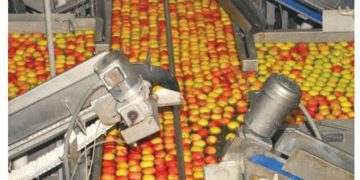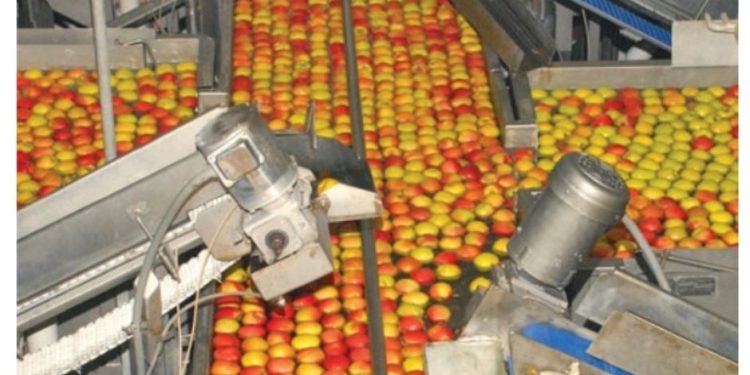Crunch Pak was facing a dilemma.
About two years ago, the Produce Traceability Initiative to enhance electronic traceability was ramping up, dictating the assignment and printing of a GTIN (Global Trade Item Number) for every outbound case of fresh produce.
Customers were also demanding more information on labels – more than Crunch Pak’s system at the time could accommodate.
Crunch Pak’s inkjet system was also difficult to maintain and did not take kindly to the cold, wet temperatures that go with packing its sliced apple and other fresh-cut products.
“With the equipment we were using before, we could not print scannable bar codes directly to the boxes – it was just the quality of the inkjet,” said Todd Danko, director of operations for Crunch Pak in Cashmere, Wash. “It was a real challenge to find a manufacturer … to find the printing equipment that could properly print at 31˚.”
Crunch Pak found it. Approaching four vendors, the company brought in trial equipment and ran tests. A system presented by Videojet, a longtime supplier of labeling applications, won out.
“Videojet was the one that performed the best,” Danko said. “It was able to handle the cold, the quality of the equipment was very simple, it was very simple to network in.”
Videojet sales engineer Casey Kilfoil, who covers Oregon and eastern Washington, worked with Crunch Pak to implement a system that now prints and applies labels that can accommodate more detailed information to the side and front of each box. To make it work, Videojet modified its equipment to provide an enclosure that protects individual labelers from the cold and dampness.
“Before, the inkjet printer sprayed ink onto the box,” Kilfoil said. “It was unreliable, there was a lot of down time, and a lot of times the bar code was not legible.”
That’s all been eliminated with the new system, which has other perks.
One computer station sends print jobs to up to 24 lines that operate simultaneously, two shifts a day. Each station has its own IP address, so labels for the different lines can be changed with ease.
“They now have the capability to use different-size labels and can fit whatever they need to, according to the customer,” Kilfoil said. “It’s all customer driven.”
Adding new products is simple now, too.
“If we have a new product, we can go in and put it into a database in a minute,” Danko said. “Before, we had to go to each individual machine and download it into every machine.”
The computer updates the labels every minute, meaning it’s easy to finely pinpoint product that could be affected by a recall.
“We can tell which boxes came off every minute,” Danko said. “When we did a mock recall, we found that we could do tighter time frames.
“When every bag or box is printed every minute, you can go, ‘Let’s be careful and go five minutes before and five minutes after,’ as opposed to pulling product that ran 30 minutes before and after. At 1,100 cases per hour, that can make a difference of about 900 cases.”
While Crunch Pak is spending more on labels, it’s spending less on maintenance and down time.
“It was almost impossible for us (before),” Danko said. “They’d spend a lot of time cleaning heads, there was so much maintenance time trying to obtain a readable barcode by printing onto the box.
“This is so much simpler.”
- Latest
- Trending































